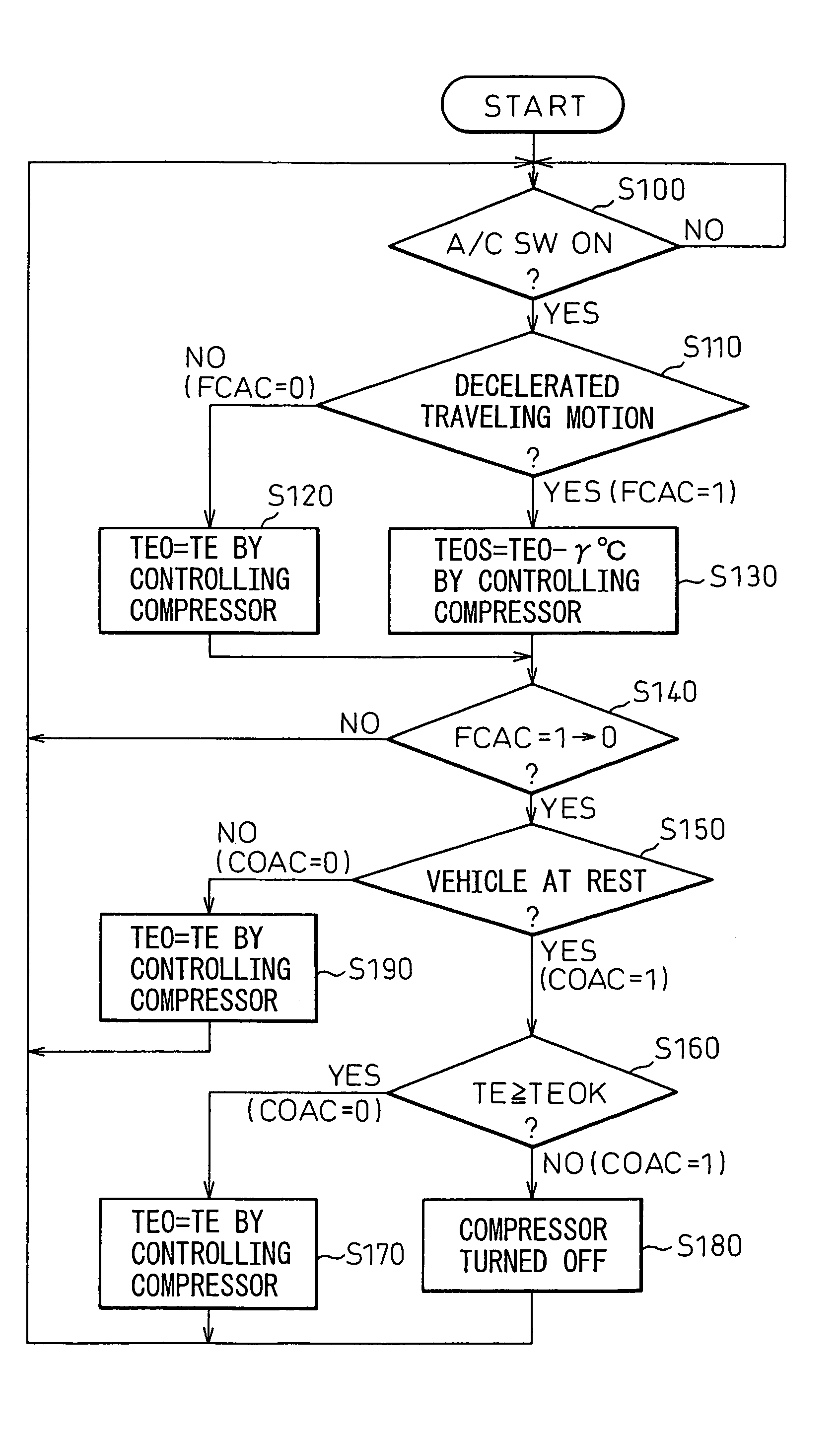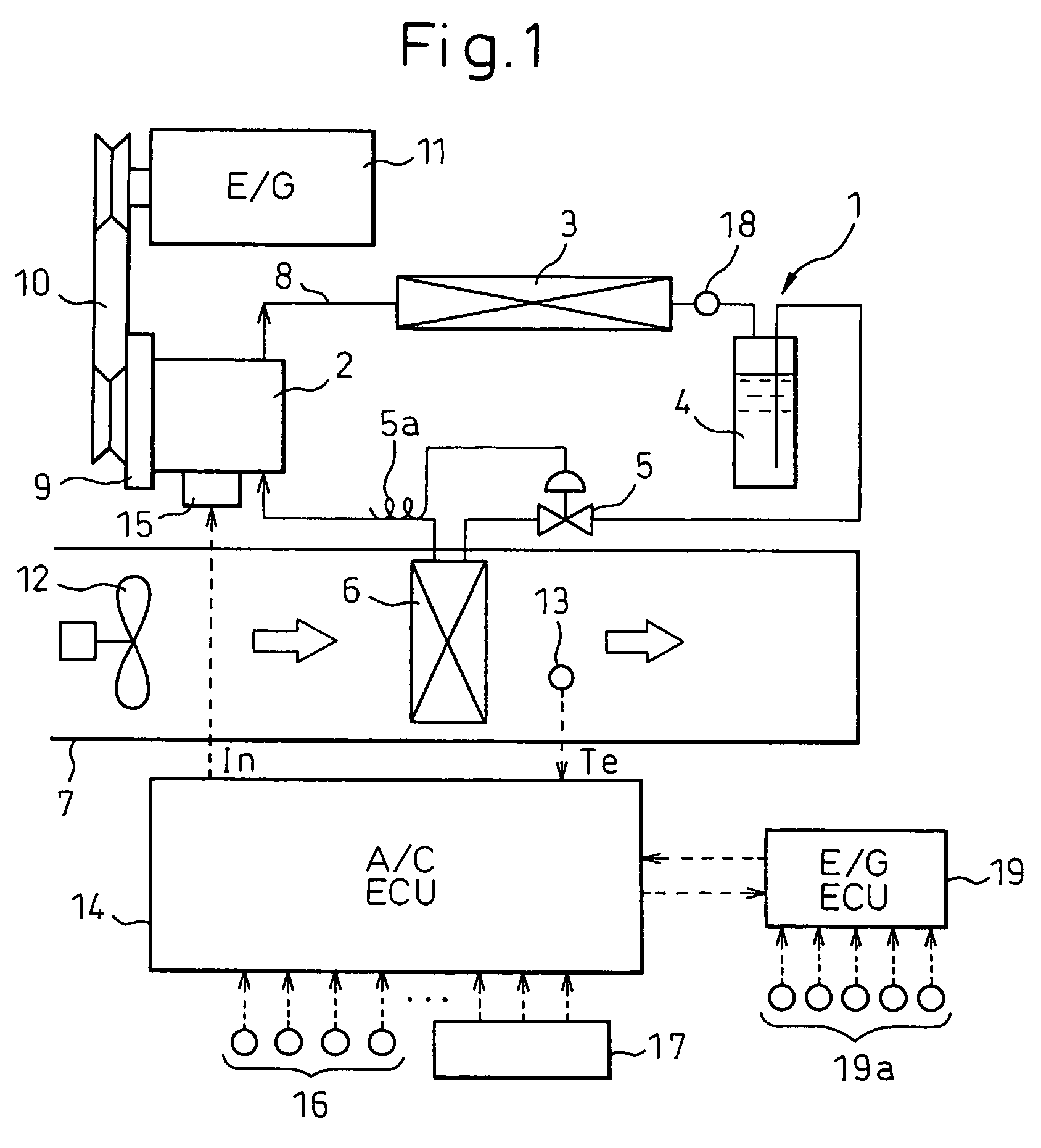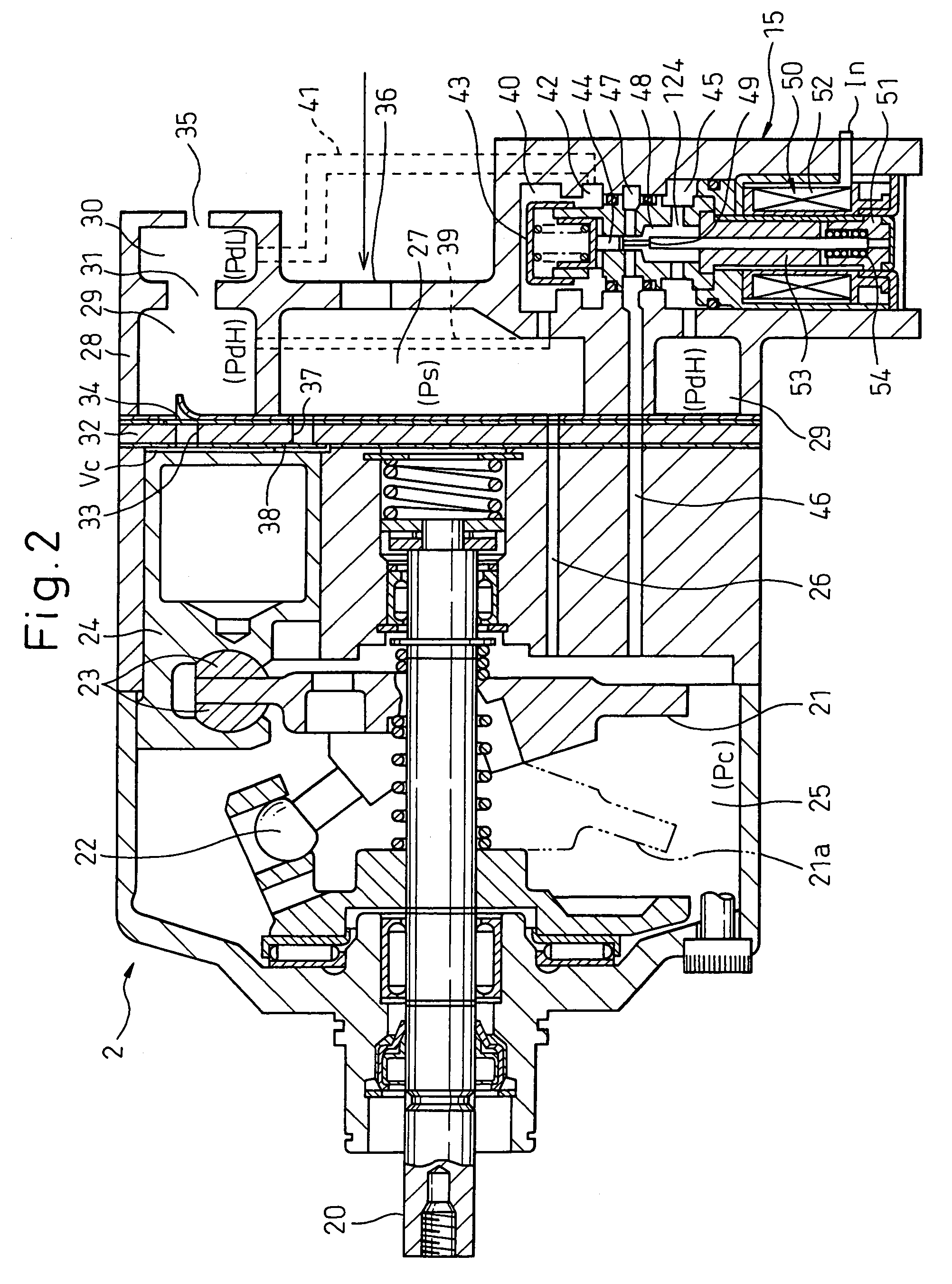Air conditioner for vehicle capable of recovering vehicle deceleration energy
a technology for air conditioners and vehicles, applied in the direction of lighting and heating apparatus, electric control, heating types, etc., can solve the problems of no method and improve the fuel consumption saving effect, and achieve the effect of better air-conditioning for passengers and marked fuel consumption saving
- Summary
- Abstract
- Description
- Claims
- Application Information
AI Technical Summary
Benefits of technology
Problems solved by technology
Method used
Image
Examples
Embodiment Construction
[0032]Embodiments of the present invention are explained below with reference to drawings.
[0033]FIG. 1 is a general block diagram of an air conditioner for a vehicle according to an embodiment of the present invention. A refrigerating cycle device 1 for air-conditioning a vehicle is provided with a compressor 2 that sucks in, compresses, and discharges a refrigerant. A superheated gas refrigerant of high temperature and high pressure discharged from the compressor 2 flows into a condenser 3, where heat exchange is effected between the refrigerant and the outside air supplied by a cooling fan (not shown) and the refrigerant is cooled and condensed.
[0034]Next, the refrigerant that has condensed in the condenser 3 flows into a receiver (gas-liquid separator) 4, within which the gas and liquid of the refrigerant are separated and excess refrigerant (liquid refrigerant) in the refrigerating cycle device 1 is stored in the receiver 4. The liquid refrigerant from the receiver 4 is reduced ...
PUM
 Login to View More
Login to View More Abstract
Description
Claims
Application Information
 Login to View More
Login to View More - R&D
- Intellectual Property
- Life Sciences
- Materials
- Tech Scout
- Unparalleled Data Quality
- Higher Quality Content
- 60% Fewer Hallucinations
Browse by: Latest US Patents, China's latest patents, Technical Efficacy Thesaurus, Application Domain, Technology Topic, Popular Technical Reports.
© 2025 PatSnap. All rights reserved.Legal|Privacy policy|Modern Slavery Act Transparency Statement|Sitemap|About US| Contact US: help@patsnap.com



